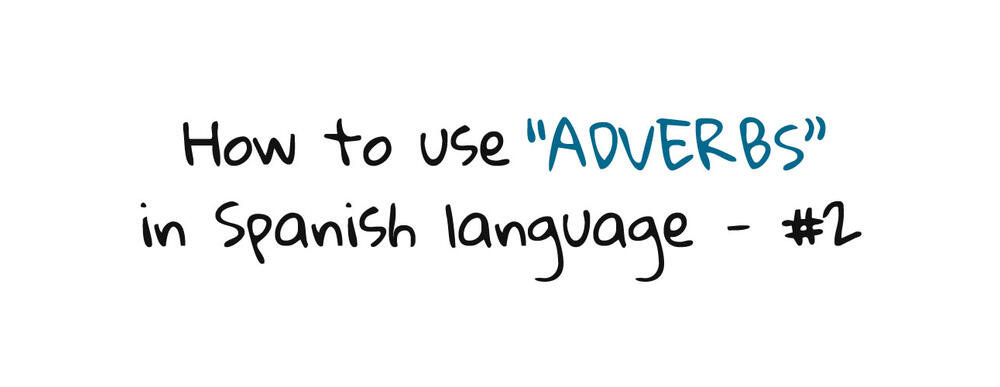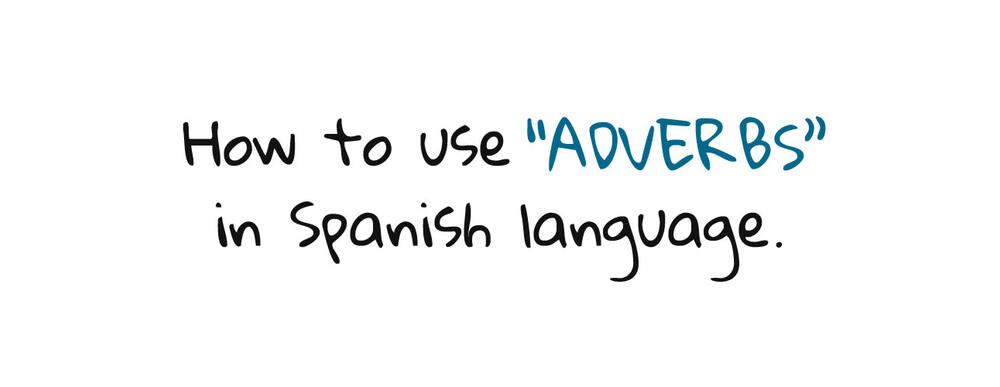Posted on Aug 28, 2021 |
We give continuity to the theme of Adverbs in the Spanish language. This is the second article to finish explaining how to use it and including some examples.
Adverb Levels
The levels of the adverbs offer information about the mode or intensity in which the action of the verb occurs. There are two types in this sense, the comparative and the superlative.
The comparative Advert
is used to compare two or more things with a greater, less or equal intensity. For example: “Maria camina tan despacio como su hermana” (Maria walks as slowly as her sister).
The Superlative Advert
can be absolute and the ending -ísimo / -ísima or -érrimo / -érrima is added. For example: “Luis llegó tardísimo al cine” (Luis arrived very late to the movies). The superlative degree or level can also be formed by adding an adverb of quantity to the adjective; We will use the adjective “mas” (more) for this example: “Su hija es la más dulce” (Her daughter is the sweetest).
Adverbial phrases
Adverbial phrases are expressions made up of two or more words in Spanish. Since they have their own meaning, they are said to make up a lexical unit. They are divided into different classes:
Latinisms:
The so-called Latinisms are expressions from Latin and used in Spanish, some of these words are: a priori, a posteriori, in vitro, ex aequo, ipso facto, among many others. For example: "Los análisis del partido se harán a posteriori, ahora solo podemos especular (The analysis of the game will be done a posteriori, now we can only speculate)".
Adverbial Meaning:
Locutions that have an adverbial sense are those expressions or ways of speaking that function as an adverb, for instance: a sabiendas (knowingly), a pie juntillas (at face value), a oscuras (in the dark), de vez en cuando (from time to time), al pie de la letra (literally), a regañadientes (reluctantly), a quemarropa tal vez (point-blank perhaps), among others. Example: "Llegaste tarde, a sabiendas que era una reunión importante. (You were late, knowing it was an important meeting.)".
Prepositional Groups:
Prepositional groups are those phrases that are formed by a preposition. For instance: a ciegas (blind), a oscuras (in the dark), a lo grande (in a big way), al revés (in reverse), desde luego (of course), de lejos (from afar), de por medio (in between), de repente (suddenly), con todo (with everything, en resumen (in short), por último (finally), sin duda (without a doubt), among others. "Ella vendrá a la fiesta de bodas esta noche sin duda (She will come to the wedding party tonight without a doubt)".
Adverb function
The adverb's main function in the sentence context is to serve as a circumstantial complement, so it can answer questions such as where? How? and when? Examples:
1 : Mi hermana vive cerca del parque central. (My sister lives near the central park.) // The word “Cerca (near)” is an adverb of place that works as a circumstantial complement of “place” and answers the question “Where?”.
2 : "Luis corre rápido. (Luis runs fast)." "Rápido (Fast)" is an adverb that works as a circumstantial complement of “mode” and answers the question “How?”
The adverb also fulfills the function of directly modifying a verb, adjective or even another adverb. Examples:
1 : "Ella camina poco (She walks little)." The adverb "poco (little)" modifies the verb "to walk."
2 : "Ese atleta es muy rápido (That athlete is very fast)." The adverb “muy (very)” modifies the adjective “rápido (fast)”.
3 : "Tu has bailado bastante bien (You have danced quite well)." The adverb "bastante (quite)" modifies the adverb "bien (well)."
Latest Posts
-
Easter Week 2025 Schedule Processions Antigua Guatemala
- Mar 02, 2025 -
Ten Beautiful Words in the Spanish Language
- Jul 13, 2024 -
Easter Week 2024 in Antigua Guatemala
- Feb 04, 2024

